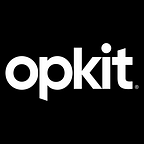To power its insurance verification platform, Opkit uses a little-known technology called X12 Electronic Data Interchange, or X12 EDI for short. X12 EDI plays a huge role in the US healthcare system. For that reason, we recommend all our customers (i.e. healthcare providers — especially those that aim to build their own software and automate operations) become familiar with the basics of it.
X12 EDI was developed in the late 1970s by the American National Standards Institute (ANSI), a nonprofit standards organization, as a means of facilitating electronic exchange of information between businesses. It was first adopted by the automative and grocery industries. Eventually, in the late 2000s, X12 EDI was introduced to the US healthcare system, where it has since become a critical component, powering basic functions like insurance eligibility checks and claims submissions.
(To be specific, X12 EDI was officially adopted by the US Department of Health and Human Services in 2009. This decision was precipitated by HIPAA, which included the stipulation that HHS must adopt national standards for electronic communication as it relates to certain “covered” healthcare transactions. Today, X12 EDI is still used by the Center for Medicare and Medicaid Services, a subsidiary of HHS, for many healthcare transactions.)
X12 EDI’s main role in the healthcare industry is to enable the electronic exchange of information between providers, insurance companies, IT vendors and other organizations. As a communication standard, X12 EDI defines the protocol for how these entities should exchange information, as well as the “message sets” that can be exchanged. The most common message sets used by the healthcare industry include 270/271 (“Eligibility, Coverage or Benefit Inquiry”/”Eligibility, Coverage or Benefit Information”), used to communicate insurance coverage details; 837 (“Health Care Claim”), used to submit claims for payment; and 276/277 (“Health Care Claim Status Request”/”Health Care Information Status Notification”), used to check the status of an existing claim.
Opkit uses 270/271 to power eligibility checks, a feature that allows healthcare providers to contact insurance companies about plan statuses and benefits. 873/874 is notable for having replaced the infamous CMS 1500, a paper form that was used to submit Medicare claims for many years.
X12 EDI has an enormous influence on how healthcare software behaves. For example, many healthcare providers wonder why it is not possible to inquire for CPT-level benefits using electronic eligibility checks. This is due to the design of the X12 EDI 270/271 message set! In short, 270/271 does not allow for CPT codes; instead, it uses something called Service Type Codes, which are vague categories of care. Service Type Codes do not map clearly to CPT codes, which makes it hard for healthcare providers to know whether specific benefits apply to specific procedures. This is just one of the ways that X12 EDI has an impact on the daily lives of healthcare workers.
While the example above is negative, it’s important to recognize that X12 EDI has been overwhelmingly beneficial for the US healthcare system. Prior to its adoption, healthcare entities exchanged information using extremely inefficient methods — phone calls and faxes. By replacing these methods in some of the busiest areas of the healthcare system, X12 EDI has eliminated a huge amount of manual administrative work, and also reduced risk of human error.
To observe this positive effect, simply look to the parts of the US healthcare industry that have yet to adopt X12 EDI or a similar electronic communication standard. Prior authorizations and lab orders, for example, are still performed over phone and fax, and these functions are known to be completely dysfunctional!
Despite its many benefits, X12 EDI has faced challenges in recent years, particularly as the healthcare industry continues to evolve and adopt new technologies. For example, the growing popularity of Fast Healthcare Interoperability Resources (FHIR), developed by another standards organization called HL7, poses a threat to X12 EDI’s position as the preeminent standard for data interchange among healthcare entities. FHIR has already been mandated by CMS for use in new APIs, such as the “Patient Access” APIs, which insurance companies and EHR companies have been recently required to implement. Nevertheless, X12 EDI remains widely used and highly valued by healthcare organizations, who recognize its critical role in improving the efficiency and quality of care in the US healthcare system.
At Opkit, we feel there is still a huge opportunity to streamline healthcare administration by investing in and building on top of X12 EDI. This is especially true as it relates to insurance coverage and benefits data, which is not available through the latest FHIR-based CMS APIs (i.e. the CMS Blue Button 2.0).
In conclusion, X12 EDI has been a transformative force in the US healthcare system, helping to streamline operations, improve communication and support regulatory compliance. As the healthcare industry continues to evolve and new technologies emerge, the importance of X12 EDI is likely to remain, ensuring that the healthcare system continues to function effectively and provide high-quality care to patients.
